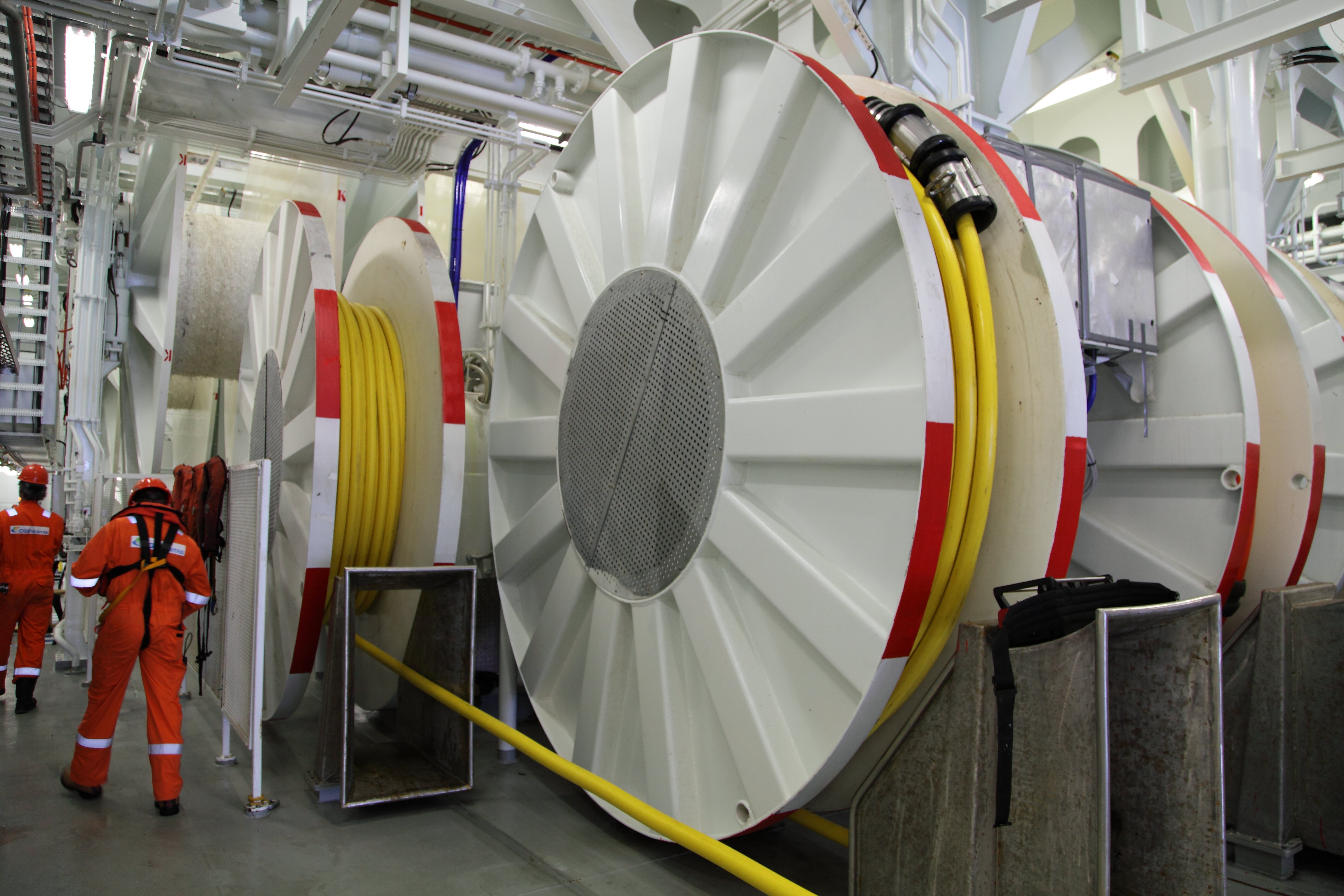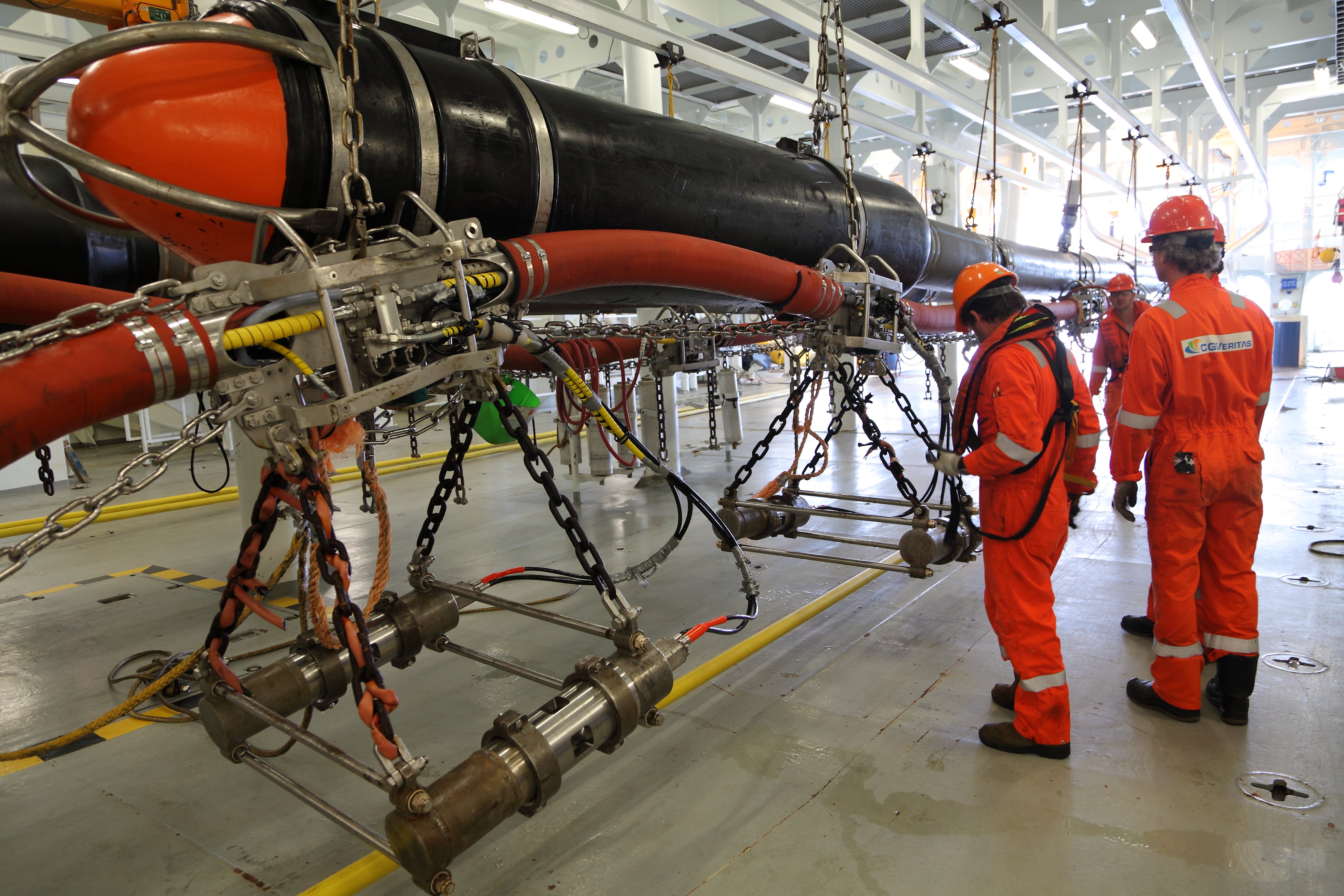In today’s difficult business and regulatory environment, businesses operating a seismic exploration, ROVs, or defense operations must be prepared to stretch the lifetime of cables to their absolute potential. This blog series presents a 5-step plan for inspecting marine cables, along with some tips for general handling that will make the most of your subsea cables:
- General Handling Advice: Storing and Unpacking
- General Handling Advice: Reeling, Installation and Deployment
- When should you call DeRegt?
It’s important to make sure that your marine cables do not fail prematurely due to poor handling before and after deployment. This particular blog will cover general advice for handling your cables to keep them operational at all times. We include here the most common procedures for preventing cable damage during shipping, storing, and unpacking.
Shipping and Storing
First, it’s essential to keep cable drums upright at all times during transport and storage. The drum is not designed to be tipped as this may cause the flange to break. Also, shipping a drum that is tipped on its side may cause dropped coils, which can lead to big problems when unwinding a cable for deployment.
Next, always batten the drum to protect the cable and hoses during transport and long periods of storage

Always chock the drums on both sides and across the entire width of the drum using solid timbers. Also, make sure to fix the drum firmly using chains through the center. Heavy drums are difficult to stop once they start to roll and can cause considerable damage.
If cables without an outer sheath have been used, re-grease them prior to storage. For cables stored in a damp or exposed environment, make sure to apply grease on the outer layer every 6 months.
Safely storing source umbilicals
The air hose in a source umbilical cable is non-collapse resistant. This means that the cable should never be exposed to an external pressure higher than the internal hose pressure. The hose is strong under pressure, but weak when vented. Tension on the cable generates a compressive force on the hose. For this reason, we recommend maintaining a minimum 10 bar of pressure in the hose during operation, handling, and storage.
It’s essential to perform regular checks to ensure that umbilicals are properly stored out of the weather when not in use. Many hose connectors used in maritime applications do not come standard with watertight caps.
Prevent damage during unpacking
For unloading and moving a cable after shipment, use a lifting bar through the drum center and a spreader bar above to prevent the lifting straps from crushing the drum flanges. If a forklift is used, lift the drum from underneath. It’s particularly important to ensure that the forks are long enough to lift on both flanges.
Always examine the drum for signs of mishandling during shipping. These signs may include:
- The drum lying on its side
- Broken/splintered flanges
- Twisted flanges
- Sagging barrel
Before removing the protective covering, secure the drum with chocks to prevent it from rolling. Remove any nails from the drum as they can damage cable sheaths and terminations during unwinding. Finally, remove the protective wrap directly over the cable.

Keep the clamps used to stow cable terminations. These can be reused if the cable is to be returned or put into storage.
Avoid premature failure and downtime
Following these basic principles will keep your subsea cables operational for as long as possible and prevent downtime and high costs caused by premature failure. For a complete overview of safety precautions and handling instructions for shipping, storing, and unpacking cables, always consult your cable manufacturer for documentation.
For a fresh perspective on how to extend the lifetime of your seismic cables and stay operational as long as possible without a large investment, download the free DeRegt Seismic Guide on Cable Handling:



